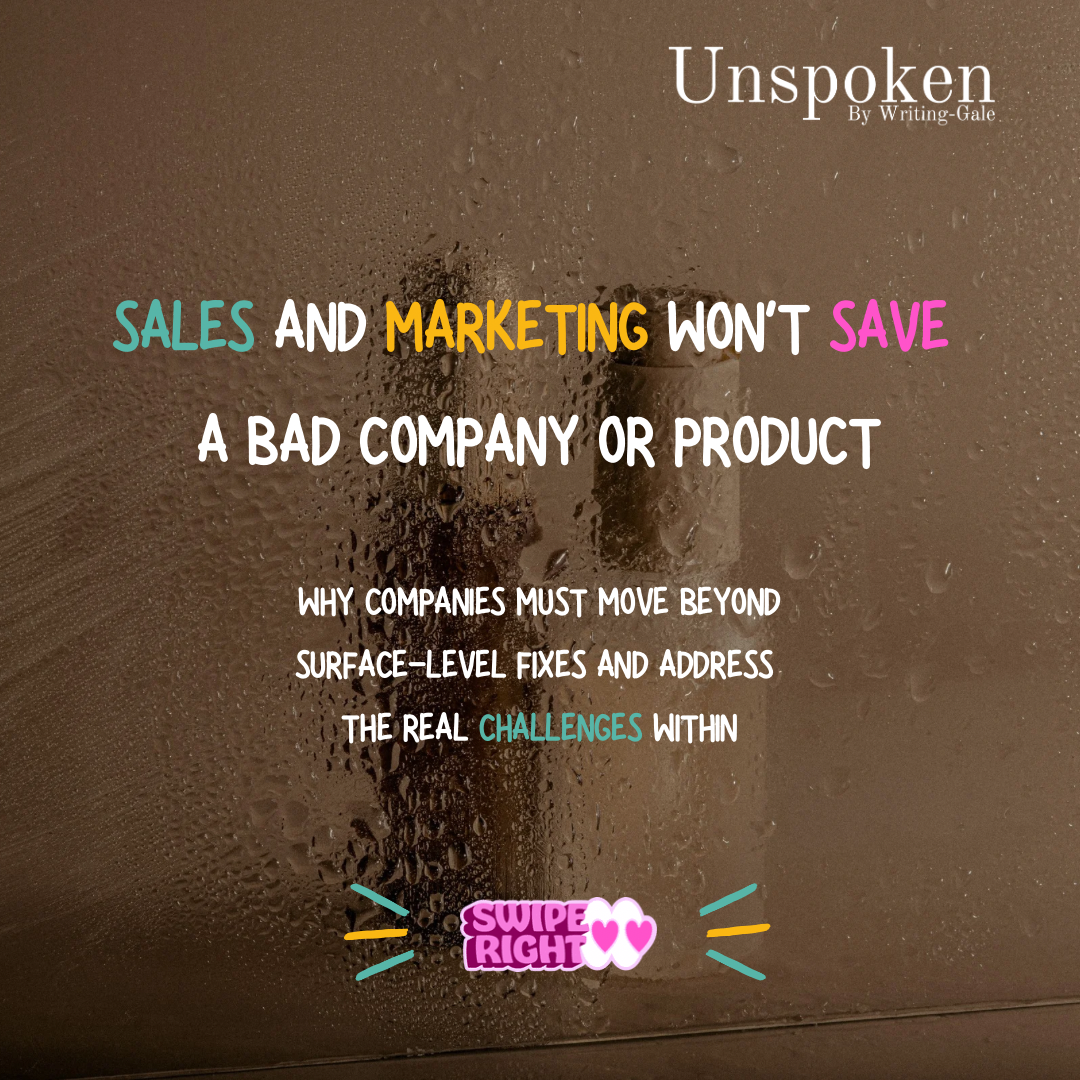The long-standing debate between sales and marketing teams continues to be a hot topic in business strategy discussions. While their alignment remains elusive in many companies, one fundamental truth persists: Sales and marketing cannot rescue a fundamentally flawed business.
Too often, when a company struggles with revenue generation or market penetration, the knee-jerk reaction is to blame the sales and marketing teams. Leaders demand better ad campaigns, increased outreach, and aggressive promotional strategies—believing that simply throwing more money at marketing will fix the problem. But if the core offering is weak, the business processes are inefficient, or the leadership lacks strategic direction, no amount of advertising or sales efforts can create sustainable success.
The Real Problem: Business Strategy, Not Just Sales and Marketing
Chris Walker, CEO of Refine Labs, said in a 2022 LinkedIn post, “Lots of companies think they have a sales and marketing problem, but they actually have a business strategy problem.” Companies often misdiagnose their challenges. They blame marketing for poor lead generation or accuse sales teams of not closing enough deals when the root issue is that their product is either undifferentiated, poorly positioned, or not solving a real customer need.
In many industries, businesses fail not because they don’t have enough marketing spend but because they:
- Offer a commodity product in a saturated market without any unique value.
- Lack clear customer research and fail to understand what their audience truly wants.
- Operate with outdated or inefficient processes that hinder customer satisfaction.
- Ignore shifts in consumer behavior and market trends, leading to irrelevance.
According to a 2023 McKinsey report, 70% of failed startups cite a lack of market need as their primary reason for failure. This isn’t a sales issue—it’s a fundamental business flaw. If your product or service doesn’t solve a problem or excite customers, no marketing campaign can change that.
Leadership and Organizational Alignment Matter More Than Promotions
William Stevens, a strategic business consultant, argues that many companies suffering from stagnant growth actually have a leadership competence problem. Too often, leaders fail to take responsibility for structural issues and instead use marketing and sales teams as scapegoats. These executives operate in a bubble, refusing to adapt or listen to feedback, which only accelerates their company’s decline.
Sallie Keys, Marketing Director at RISETEK Global, echoes this sentiment: “Many companies lack a deep awareness of their own products, services, and customers. If leadership isn’t connected to what truly drives customer satisfaction, no marketing strategy can compensate.” Simply put, if a company doesn’t understand its value proposition and target audience, marketing efforts will remain misguided and ineffective.
Fix the Core Issues Before Scaling Promotion
A great marketing campaign can generate interest, but it cannot fix a bad product or overcome a broken operational model. Companies must be willing to:
- Reevaluate their product-market fit. Is the offering genuinely needed, or is it just another copycat in an oversaturated space?
- Invest in operational efficiency. Are internal bottlenecks, poor service delivery, or outdated technology slowing down growth?
- Listen to customer feedback. Are customers returning? If not, what’s causing the drop-off?
- Align leadership with execution. A strong strategy is meaningless if there’s no internal alignment to execute it effectively.
Sales and marketing are amplifiers—they can only enhance what already exists. If the product, service, or business model is inherently flawed, increased ad spend or aggressive sales tactics will only delay the inevitable. Instead of searching for a marketing miracle, struggling businesses should focus on fixing their foundation—aligning their value proposition, operations, and leadership before scaling promotion.
Companies must move beyond surface-level fixes and address the real challenges within. Because no matter how many ads you run, how many salespeople you hire, or how much social media buzz you create, a bad business will remain a bad business—until it fixes itself.

